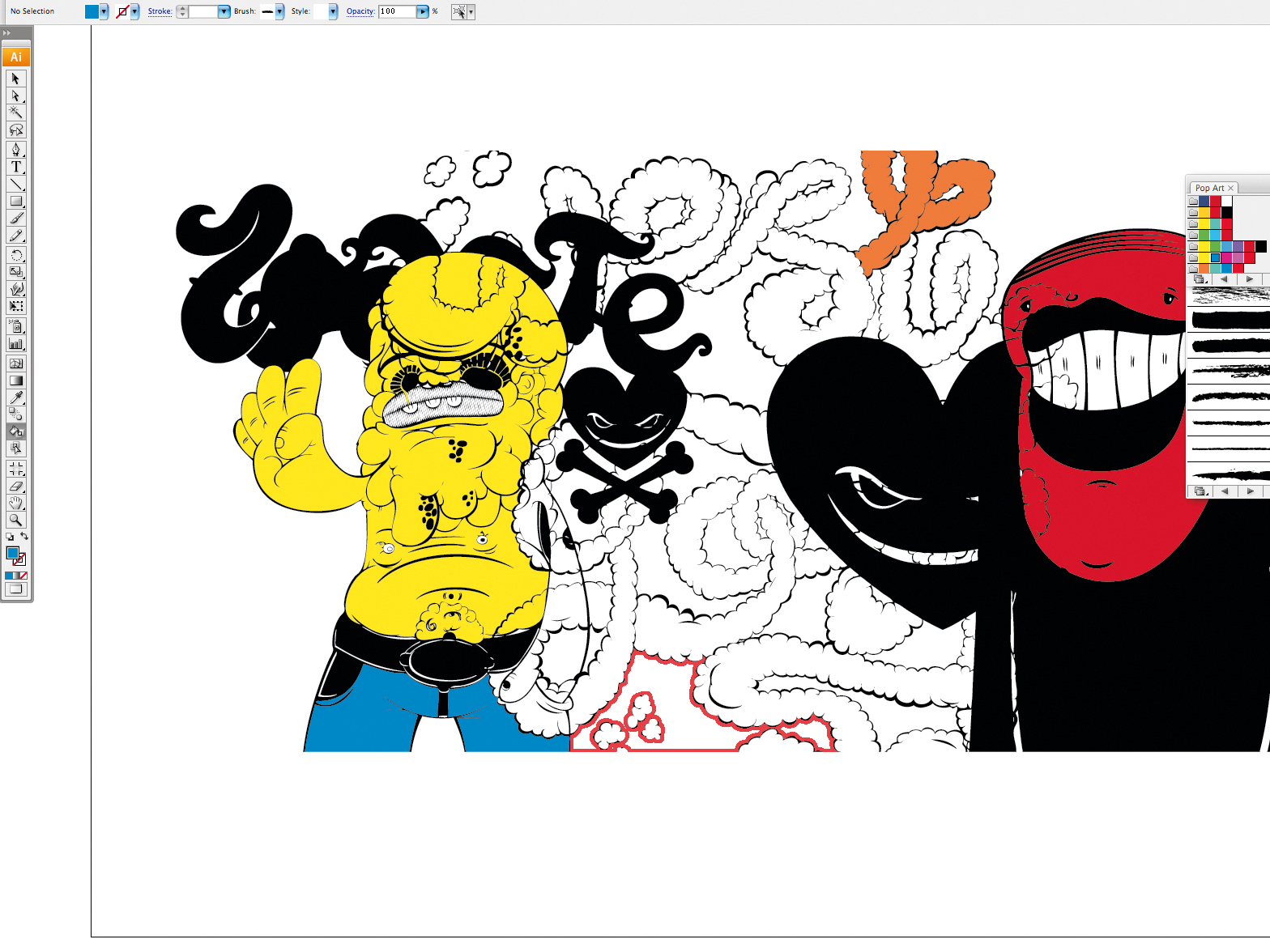TechRadar Verdict
A excellent upgrade that irons out most of the small number of difficulties we had with Illustrator
Pros
- +
Speedy with good stability
- +
Works with Flash better than before
Cons
- -
Gradient panel is still due an overhaul
Why you can trust TechRadar
During the course of its last two incarnations, Illustrator developed from a design tool to a medium unto itself. Just witness the digital art trends that have been affected by its tool sets: with the release of CS, boxy vector art exploded, cropping up everywhere, while CS2's Live Paint groups enabled even the most novice user to quickly create cartoon pastiches and flowery art elements.
We can expect Illustrator CS3, then, to hone these existing tool sets while introducing yet more trend-defining features, and on first sight, Illustrator does precisely that.
As with the rest of the Creative Suite 3, the most notable improvement is a remodelled interface. Though Dreamweaver and InDesign certainly profit from Adobe's decluttering, Photoshop and, in particular, Illustrator greatly benefit from the single-line tool set and drawer mechanism panels that now line the right-hand side of the workspace. The remodelled interface for all of CS3's apps is built around the idea of getting everything out of the way fast, and nowhere is this more essential than in Illustrator.
Opening a blank canvas and quickly sketching out some shapes reveals the first major performance boost. The PC version feels far more responsive even when editing multiple channels and paths at a close zoom. On an Intel Mac, the Universal Binary is a wish come true; dragging anchor points, rendering and zooming about a canvas are now exceptionally quick and intuitive where they used to be cumbersome.
An issue for any previous users was that Illustrator could make selecting anchor points to resize and shape vectors nothing short of a nightmare. Thankfully, Adobe has seen the light and introduced a simple mechanism that enlarges anchor points and causes the cursor to flash as you move the mouse over them, ensuring you're picking the right anchor point and not disturbing any underlying layers.
Isolation Mode is a further new feature that makes perfect sense in use. With it enabled, you can select a group, layer or sub-layer and work on it quite aggressively, safe in the knowledge you won't disturb the surrounding artwork.
Of course, grouping and locking layers allowed you to do this the long way in previous releases, but again, it's these kinds of tweaks that have really shaped this new release. Illustrator CS3 doesn't just seem newer, it's an all-round better vector editor than it used to be. And that's what counts.
Live Colour
Performance and looks aside, CS3 introduces two major new features. The first, and most immediately appealing of these, is Live Colour. At first look it feels like a cheat's approach to colour schematics, but in use is a powerful new colouring tool.
In essence, Live Colour maps colour schemes by one of 23 classic colour harmonies that observe the design laws of Complementary, Analogous, Triad and Monochromatic. Rather than explaining the science, Live Colour simply maps the colour paths out for you, meaning your entire colour scheme for a document can be experimented with in one click. And if the results don't suit, simply flick to another colour scheme.
Support for colour profiles is further enhanced by the ability to map colour schemes across Pantone's library as well as metallic, spot and any other special finishes. All profiles are editable and can be saved down as user-profiles which can be deployed across CS3. As Illustrator tends to be the first tool to reach for at the birth of a design project, this is a fantastically productive feature.
The second further overhaul of Illustrator is only apparent once outside of its environment. Flash and Illustrator have always had a harmonious relationship, and within CS3 this is exploited even further.
Illustrator files can now be pasted directly into Flash, which recognises paths, anchor points, colour schemes and profiles (including video and film settings and NTSC CV support amongst others). Layers and grouping info are also supported, as well as the dynamic text and input text in Flash.
This rendition of Illustrator is at home within any of the aforementioned environments - a fact you're reminded of on opening a new document, where a handy dialog appears asking whether you want to create a print document, a web document or even a video and film document, which gives you a selection of standard video sizes. In video and film mode, there is built-in support for title and action safeguides and transparent backgrounds.
Overall, this latest edition of Illustrator builds on its existing best bits while making some important tweaks to its productivity and integration with other Creative Suite applications. Sure, there are a few disappointments - Illustrator's Gradient panel is due an overhaul and it still lacks some of the features found in Flash - but the speed, stability and pace at which you can get results is outstanding.
